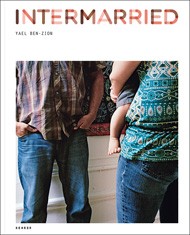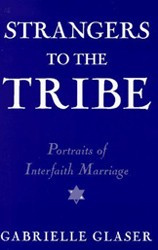The intermarriage rate in the American Jewish community is over 50 percent and growing, according to Sergio DellaPergola, the world’s foremost authority on Jewish population trends. This statistic and its possible implications have become a major concern as questions have arisen as to whether the vibrancy of the Jewish community can be sustained with such a high proportion of intermarried couples. Jewish Intermarriage Around the World offers an ingenious approach to the topic by providing the reader with fascinating case studies of intermarriage patterns in 13 countries other than the USA and Israel. The countries include four distinctive groups: 1) Europe (specifically Great Britain, Sweden, Finland, and Norway), 2) the Former Soviet Union (FSU), 3) primarily English-speaking countries (specifically Canada, South Africa, and Australia), and, 4) South America (specifically Mexico, Venezuela, Argentina, and Curacao). Each case study provides the reader with incisive analysis by an expert on out-marriage in that particular country.
The framework for the book is that of the Hadassah-Brandeis Institute (HBI) where the emphasis is on “fresh ideas about Jews and gender worldwide.” Both factors are especially crucial for understanding the issues. Gender plays an especially significant role in understanding the impact of intermarriage since Orthodox Jewish law (Halakah) defines the children of a Jewish mother as Jewish whether or not the father is Jewish. An international perspective is particularly important because Jews live, work, and study all over the world.
Among the many important and complex issues addressed in the book is the pressing need to standardize the measurement techniques and meaning of the terms, such as “out-marriage,” “intermarriage,” “mixed marriage,” and “exogamous marriage.” They are not equivalents. Lack of clarity of terms means the public is not getting a full and accurate picture of changing social patterns.
Another issue raised in these absorbing articles is the complexity of Jewish self-identity. Out-marriage doesn’t automatically mean that Jews and their children are “lost” to the Jewish community. As Sally Frankental and Stuart Rothgieser report in their article “Intermarriage between Jews and Gentiles in South Africa,” “the assumption that endogamous Jewish couples will produce Jewish children ignores the fact that many intermarrying Jews stridently assert the validity and legitimacy of their own Jewishness and indicate a desire to transmit that identity, or label, to their children.” This was a pattern described in many of the countries.
Reading these articles crystallized for me the need to address a very thorny issue — the definition of “who is a Jew.” There is a lack of consensus among Orthodox, Conservative, and Reform rabbinical groups as to how to develop a non-divisive and non-polarizing approach to conversion and defining who is a Jew.
Jewish Intermarriage Around the World is a must read for Jewish Studies social scientists and everyone concerned with increasing the vibrancy of the Jewish community worldwide. Some of the articles may present the average reader with a bit of a challenge in terms of understanding the technical aspects of the intermarriage statistics, but those highly quantitative discussions can be skimmed and more attention paid to the meaty and fascinating discussions of the findings of the study. This book is much more than a study of intermarriage rates. It is an enthralling account of the global nature of the Jewish people.





